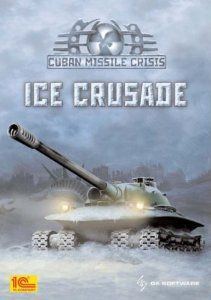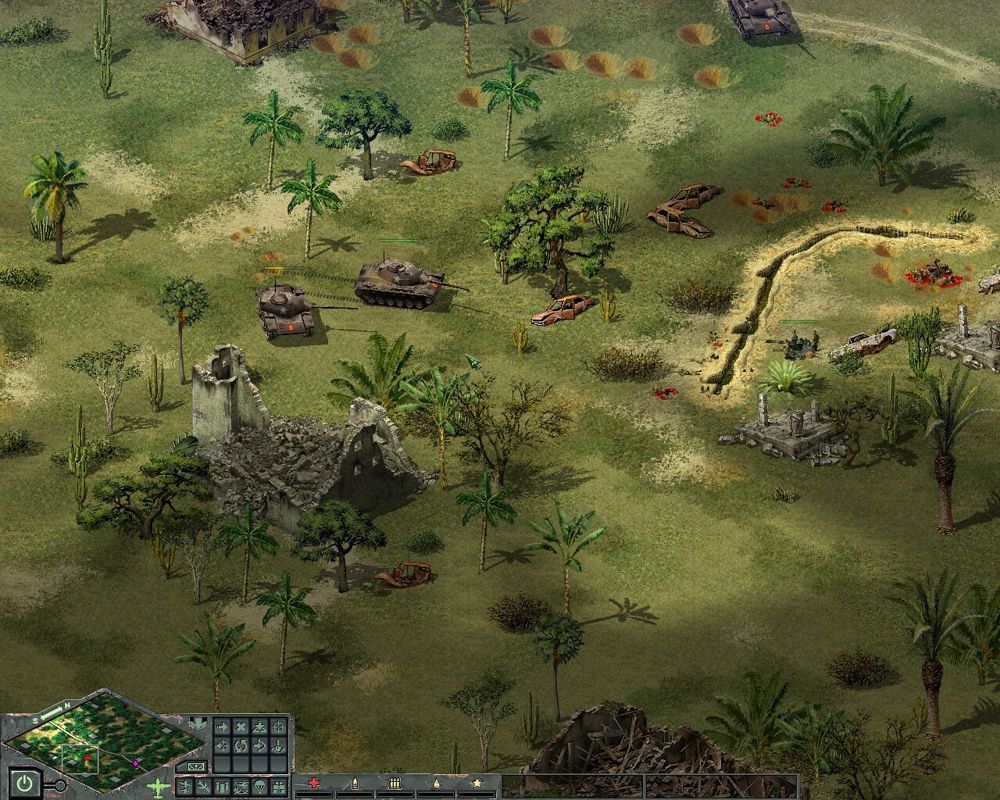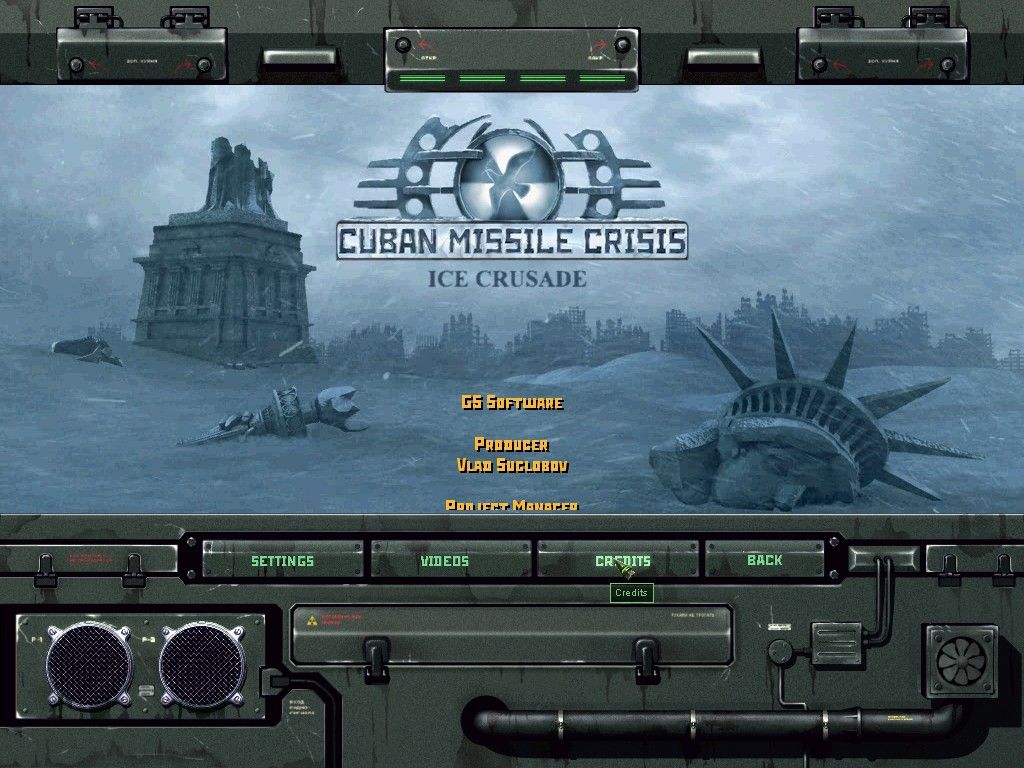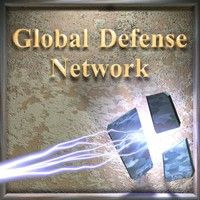Retro Replay Review
Gameplay
Cuban Missile Crisis: Ice Crusade builds on the solid foundation of its predecessor by offering two distinct campaigns—one for the United States and one for the Soviet Union—across a total of 25 missions. Each mission presents unique objectives, ranging from territorial defense to resource-driven offensives, ensuring that players must continually adapt their tactics. The balance between base-building, scouting, and direct engagement is finely tuned, rewarding both strategic planning and swift unit deployment.
The addition of 22 new units, including the nimble Hunter tank and the T-60 light armor, broadens tactical diversity. Players can also field two formidable “super units”: the Convair Model 49 helicopter, which excels at rapid air support, and the Tyulpan 240mm self-propelled mortar, capable of demolishing entrenched enemy fortifications. This variety keeps the battlefield dynamic, as opponents must constantly counter evolving threats.
Resource management remains a core pillar of Ice Crusade’s gameplay loop. Salvaging radioactive scrap and securing supply depots are essential for unit production, especially in the ice-locked Arctic theaters. The environmental hazards, including shifting ice fields and sudden radiation storms, add another layer of strategic depth: armies on the move must scout carefully or risk being cut off or weakened by unpredictable weather patterns.
Graphics
Visually, Ice Crusade leverages its post-apocalyptic Arctic setting to full effect. The frozen wastelands, littered with the rusted husks of ruined cities, create an immersive backdrop for large-scale confrontations. Snow and ice textures are surprisingly detailed, with subtle reflections and drifting snowflakes that underscore the game’s chilling atmosphere.
Unit models have been updated to reflect the game’s expanded arsenal. Tanks and helicopters are rendered with crisp details, from gun barrels to rotor animations, and special effects like explosions and tracer fire are both satisfying and easy to follow. However, some animations—particularly in the infantry units—feel dated compared to modern RTS titles, but they retain enough personality to remain readable during hectic battles.
The user interface strikes a balance between form and function. Clear HUD elements display resource counts, unit information and mission objectives, allowing players to make quick decisions without losing sight of the action. While the color palette can be muted at times—dominated by whites, greys and ice blues—this design choice supports both visual clarity and the oppressive mood of a frozen Cold War.
Story
Set in 1967, five years after a brief but devastating nuclear exchange, Ice Crusade picks up the narrative threads of Cuban Missile Crisis: The Aftermath and thrusts players into a world reshaped by radiation and global cooling. The prologue outlines how American strongholds in the southern hemisphere became inhospitable, prompting a dramatic shift in Cold War dynamics as Soviet forces push through the melting Arctic ice to strike at the heart of U.S. territory.
Each faction’s campaign offers its own perspective on this frozen confrontation. The U.S. storyline focuses on desperate defense and guerrilla tactics, as players struggle to hold key supply points and protect dwindling civilian enclaves. The Soviet campaign, by contrast, emphasizes the might of a reorganized Red Army, showcasing daring amphibious assaults and ice-breaking convoys that reveal the harsh realities of Arctic warfare.
Narrative delivery is handled through brief cutscenes and mission briefings that, while not exceptionally cinematic, provide enough context to understand the stakes. Character development is minimal—typical of RTS games from this era—but the overarching scenario of nations locked in a frozen stalemate resonates, especially when combined with geographically diverse objectives and environmental challenges.
Overall Experience
Cuban Missile Crisis: Ice Crusade offers a satisfying blend of strategic depth and thematic immersion for fans of classic real-time strategy. The two campaigns, extensive unit roster and environmental hazards come together to create a gameplay experience that feels fresh despite its roots in a 1990s engine. The learning curve is approachable for newcomers yet offers enough nuance to keep veteran commanders engaged.
While some graphical and animation elements show their age, the game’s atmosphere and tactical variety overshadow technical shortcomings. Resource management in the frozen north introduces a unique layer of difficulty that encourages creative problem-solving, and the inclusion of super units introduces memorable, blockbuster moments when deployed effectively.
Ultimately, Ice Crusade is a worthy standalone expansion that both builds on and enriches the world of Cuban Missile Crisis: The Aftermath. Its combination of new units, challenging environmental conditions and dual campaigns make it a must-play for strategy enthusiasts interested in an alternative Cold War scenario. If you’re seeking a deep RTS experience with a post-nuclear twist, this title delivers.
 Retro Replay Retro Replay gaming reviews, news, emulation, geek stuff and more!
Retro Replay Retro Replay gaming reviews, news, emulation, geek stuff and more!









Reviews
There are no reviews yet.